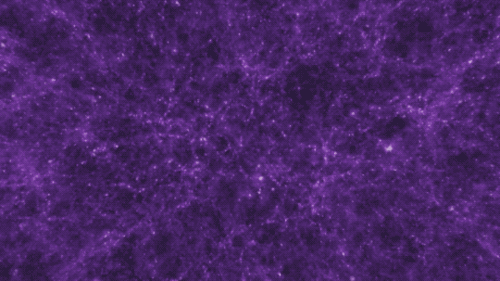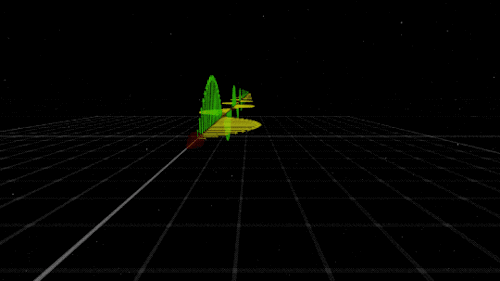... Why.

... why.
There are no aliens - so the only thing we could use this as is like a nuke - but that would destroy the entire Earth xD
WANT MORE? GET YOUR HEAD STUCK IN THE STARS AT MY BLOG!
More Posts from Acosmicgeek and Others
True.
Iron actually takes more energy to fuse than it releases, so the inward pressure needed to keep the star from collapsing isn’t enough when it’s mainly fusing iron, and then it collapses.
WANT MORE? GET YOUR HEAD STUCK IN THE STARS AT MY BLOG!

When Stars Die…….

THE LIFE OF A STAR: CLASSIFICATION
In order to understand the life of a star, we must understand star classification.
And there are SO many different ways to classify a star.
In star classification, understanding the relationship between color and temperature is crucial. The greater the temperature of the star, the bluer they are (at their hottest, around 50,000 degrees Celcius), while red stars are cooler (at their coolest, around 3,000 degrees Celcius). This occurs on a wide range (fun fact: stars only come in red, orange, yellow, white, and blue, because stars are approximately something called a "black body"). For example, our Sun is a yellow star with a surface temperature of 5,500 degrees Celcius (The Life of a Star).
But why is this so? In order to understand that, I'm going to tell you about how stars live at all. This is what will determine the entire life of a star - something we'll be focusing on throughout this series. Two words: nuclear fusion.
Nuclear fusion is "a reaction in which two or more atomic nuclei are combined to form one or more different atomic nuclei and subatomic particles (neutrons or protons). The difference in mass between the reactants and products is manifested as either the release or absorption of energy." (Wikipedia) And this is where nuclear fusion gets REALLY important to stars. Throughout their lives, stars undergo nuclear fusion in their core. This is mostly in the form of fusing two or more hydrogen atoms into one or more helium atoms. This releases energy in the form of light (the pressure of nuclear fusion in the core also prevents the star from collapsing under the weight of gravity, something we'll get to later). The energy transports to the surface of the star and then radiates at an "effective temperature." (Britannica)
Stars are different colors due to differing amounts of energy. This is best explained by Einstein's e=mc2 or the mass-energy equivalence. In other words, the more mass something has, the more energy, and vice versa. Stars with greater mass undergo more nuclear fusion - and as such - emit more energy/temperature. And so, the bigger the star, the greater the temperature, the bluer the star; and the smaller the star, the lower the temperature, the redder the star (Universe Today). Another way to think about this is this: the hotter something is, the shorter frequency of energy it emits. Blue light has a shorter frequency than red light, and so, higher energy/temperature stars are bluer.
Another important classification of a star is its luminosity (or the brightness, or the magnitude of the star). (The Life of a Star)
The most famous diagram classifying stars is the Herzsprung Russell Diagram, shown in this article's picture. The x-axis of the diagram shows surface temperature, hottest left, and coolest right. The y-axis shows brightness, brighter higher, and dimmer lower. There are main groups on the diagram.
Most stars fall in a long band stretching diagonally, starting in the upper left corner and ending in the right lower corner, this is called the main sequence. The main sequence shows stars which mostly use their life going through nuclear fusion. This process takes up most of a star's life. Most stars which are hotter and more luminous fall in the upper left corner of the main sequence and are blue in color. Most stars that have lower-masses are cooler, and redder falls in the lower right. Yellow stars like our Sun fall in the middle.
The group located in the lower-left corner are smaller, fainter, and bluer (hotter) and are called White Dwarfs. These stars are a result of a star like our Sun one day running out of Hydrogen.
The group located right above the righter's main sequence is larger, cooler, brighter, and a more orange-red or red, are called Red Giants. They are also part of the dying process of a star like our sun. Above them in the upper right corner are Red Super Giants, massive, bright, cooler, and much more luminous. To the left of the Red Super Giants are similar stars which are just hotter and bluer and are called the Blue Super Giants.
That explains the most famous star classifying diagram. The important thing to remember is the data on the chart is not what a star will be like it's whole life. A star's position on the chart will change like our Sun will one day do.
In a ThoughtCo. article on the Hertzsprung Russell Diagram, Carolyn Collins Petersen wrote: "One thing to keep in mind is that the H-R diagram is not an evolutionary chart. At its heart, the diagram is simply a chart of stellar characteristics at a given time in their lives (and when we observed them). It can show us what stellar type a star can become, but it doesn't necessarily predict the changes in a star." ( The Hertzsprung-Russell Diagram and the Lives of Stars)
And this will continue to be important in the next chapters. Stars don't just stay in the same position their entire lives: they change in their color, luminosity, and temperature. In this series, we'll be tracking how stars form, live and die - all dependent on these three factors - and nuclear fusion - again - super important :)
Previous - Chapter 1: An Introduction
Next - Chapter 3: Star Nurseries
WANT MORE? GET YOUR HEAD STUCK IN THE STARS AT MY BLOG!
It surprises me how disinterested we are today about things like physics, space, the universe and philosophy of our existence, our purpose, our final destination. Its a crazy world out there. Be curious.
Stephen Hawking
WANT MORE? GET YOUR HEAD STUCK IN THE STARS AT MY BLOG!
Omg xD
It’s true though. Do you believe in a flat Earth? Look up at the moon. See that curvature? If the Earth were flat it’d just be a straight line, running across the moon.
WANT MORE? GET YOUR HEAD STUCK IN THE STARS AT MY BLOG!

what you think? is this post right?
Goddamn
We learned about the Uyuni Salt Flat in Marine Bio this year but the teacher never showed ANYTHING like this!!! I already thought that the band was beautiful, this just makes it 10 times more so. Welp, I know what to put next on my dream vacay list.
WANT MORE? GET YOUR HEAD STUCK IN THE STARS AT MY BLOG!

Night Sky Reflections from the Worlds Largest Mirror : What’s being reflected in the world’s largest mirror? Stars, galaxies, and a planet. Many of these stars are confined to the grand arch that runs across the image, an arch that is the central plane of our home Milky Way Galaxy. Inside the arch is another galaxy – the neighboring Large Magellanic Cloud (LMC). Stars that are individually visible include Antares on the far left and Sirius on the far right. The planet Jupiter shines brightly just below Antares. The featured picture is composed of 15 vertical frames taken consecutively over ten minutes from the Uyuni Salt Flat in Bolivia. Uyuni Salt Flat (Salar de Uyuni) is the largest salt flat on Earth and is so large and so extraordinarily flat that, after a rain, it can become the world’s largest mirror – spanning 130 kilometers. This expansive mirror was captured in early April reflecting each of the galaxies, stars, and planet mentioned above. via NASA
Wow, Mars is one of the closest planets to us xD
Just shows you how massive space really is
(Maybe even infinitely so)
WANT MORE? GET YOUR HEAD STUCK IN THE STARS AT MY BLOG!

This is what the Earth looks like from the surface of our red neighbour, Mars!
Happy Earth day everyone 🌎🌍🌏 Hope you’re all staying safe!!
Image Credit: NASA’s Curiosity Mars Rover
The rickroll is basically all scientists in a nutshell
WANT MORE? GET YOUR HEAD STUCK IN THE STARS AT MY BLOG!

Let’s keep asking questions…
Looks like I’m getting a new wallpaper
It’s so beautiful ;(
WANT MORE? GET YOUR HEAD STUCK IN THE STARS AT MY BLOG!
![Sunset In The Kananaskis Valley, Alberta. [2853 X 3566] [oc] - Author: ProjectOxide On Reddit](https://64.media.tumblr.com/4acdc8c530b36b0a46d6fdcd8512ba15/3f0453439e862857-4a/s500x750/e2c24b329e0a1ff0bdf4a929883229be487175eb.jpg)
Sunset in the Kananaskis Valley, Alberta. [2853 x 3566] [oc] - Author: ProjectOxide on reddit
That’s a great explanation of particle physics xD
But really, this stuff is so interesting! I love reading about stuff like this - so good work NASA!
If you liked the four forces governing the universe, you might like this book I just finished reading for the seventh time (Neil DeGrasse Tyson’s “Astrophysics for People in a Hurry”). It talks about these forces and a lot of other really cool concepts, like dark energy and chemistry-related-to-space.
WANT MORE? GET YOUR HEAD STUCK IN THE STARS AT MY BLOG!
May the Four Forces Be With You!
May the force be with you? Much to learn you still have, padawan. In our universe it would be more appropriate to say, “May the four forces be with you.”

There are four fundamental forces that bind our universe and its building blocks together. Two of them are easy to spot — gravity keeps your feet on the ground while electromagnetism keeps your devices running. The other two are a little harder to see directly in everyday life, but without them, our universe would look a lot different!
Let’s explore these forces in a little more detail.
Gravity: Bringing the universe together

If you jump up, gravity brings you back down to Earth. It also keeps the solar system together … and our galaxy, and our local group of galaxies and our supercluster of galaxies.
Gravity pulls everything together. Everything, from the bright centers of the universe to the planets farthest from them. In fact, you (yes, you!) even exert a gravitational force on a galaxy far, far away. A tiny gravitational force, but a force nonetheless.

Credit: NASA and the Advanced Visualization Laboratory at the National Center for Supercomputing and B. O'Shea, M. Norman
Despite its well-known reputation, gravity is actually the weakest of the four forces. Its strength increases with the mass of the two objects involved. And its range is infinite, but the strength drops off as the square of the distance. If you and a friend measured your gravitational tug on each other and then doubled the distance between you, your new gravitational attraction would just be a quarter of what it was. So, you have to be really close together, or really big, or both, to exert a lot of gravity.
Even so, because its range is infinite, gravity is responsible for the formation of the largest structures in our universe! Planetary systems, galaxies and clusters of galaxies all formed because gravity brought them together.
Gravity truly surrounds us and binds us together.
Electromagnetism: Lighting the way

You know that shock you get on a dry day after shuffling across the carpet? The electricity that powers your television? The light that illuminates your room on a dark night? Those are all the work of electromagnetism. As the name implies, electromagnetism is the force that includes both electricity and magnetism.
Electromagnetism keeps electrons orbiting the nucleus at the center of atoms and allows chemical compounds to form (you know, the stuff that makes up us and everything around us). Electromagnetic waves are also known as light. Once started, an electromagnetic wave will travel at the speed of light until it interacts with something (like your eye) — so it will be there to light up the dark places.

Like gravity, electromagnetism works at infinite distances. And, also like gravity, the electromagnetic force between two objects falls as the square of their distance. However, unlike gravity, electromagnetism doesn’t just attract. Whether it attracts or repels depends on the electric charge of the objects involved. Two negative charges or two positive charges repel each other; one of each, and they attract each other. Plus. Minus. A balance.
This is what happens with common household magnets. If you hold them with the same “poles” together, they resist each other. On the other hand, if you hold a magnet with opposite poles together — snap! — they’ll attract each other.
Electromagnetism might just explain the relationship between a certain scruffy-looking nerf-herder and a princess.
Strong Force: Building the building blocks

Credit: Lawrence Livermore National Laboratory
The strong force is where things get really small. So small, that you can’t see it at work directly. But don’t let your eyes deceive you. Despite acting only on short distances, the strong force holds together the building blocks of the atoms, which are, in turn, the building blocks of everything we see around us.
Like gravity, the strong force always attracts, but that’s really where their similarities end. As the name implies, the force is strong with the strong force. It is the strongest of the four forces. It brings together protons and neutrons to form the nucleus of atoms — it has to be stronger than electromagnetism to do it, since all those protons are positively charged. But not only that, the strong force holds together the quarks — even tinier particles — to form those very protons and neutrons.
However, the strong force only works on very, very, very small distances. How small? About the scale of a medium-sized atom’s nucleus. For those of you who like the numbers, that’s about 10-15 meters, or 0.000000000000001 meters. That’s about a hundred billion times smaller than the width of a human hair! Whew.
Its tiny scale is why you don’t directly see the strong force in your day-to-day life. Judge a force by its physical size, do you?
Weak Force: Keeping us in sunshine

If you thought it was hard to see the strong force, the weak force works on even smaller scales — 1,000 times smaller. But it, too, is extremely important for life as we know it. In fact, the weak force plays a key role in keeping our Sun shining.
But what does the weak force do? Well … that requires getting a little into the weeds of particle physics. Here goes nothing! We mentioned quarks earlier — these are tiny particles that, among other things, make up protons and neutrons. There are six types of quarks, but the two that make up protons and neutrons are called up and down quarks. The weak force changes one quark type into another. This causes neutrons to decay into protons (or the other way around) while releasing electrons and ghostly particles called neutrinos.
So for example, the weak force can turn a down quark in a neutron into an up quark, which will turn that neutron into a proton. If that neutron is in an atom’s nucleus, the electric charge of the nucleus changes. That tiny change turns the atom into a different element! Such reactions are happening all the time in our Sun, giving it the energy to shine.
The weak force might just help to keep you in the (sun)light.

All four of these forces run strong in the universe. They flow between all things and keep our universe in balance. Without them, we’d be doomed. But these forces will be with you. Always.
You can learn more about gravity from NASA’s Space Place and follow NASAUniverse on Twitter or Facebook to learn about some of the cool cosmic objects we study with light.
Make sure to follow us on Tumblr for your regular dose of space: http://nasa.tumblr.com
-
 acosmicgeek reblogged this · 4 years ago
acosmicgeek reblogged this · 4 years ago

